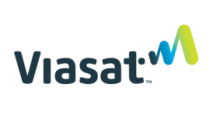SAS, GARP survey finds new CECL accounting standard already affecting strategies
SAS, GARP survey finds new CECL accounting standard already affecting strategies
As the clock is ticking for CECL implementation, challenges remain
CARY, N.C., May 17, 2018 /PRNewswire/ -- Current Expected Credit Loss (CECL), the largest accounting change in history, will alter how banks estimate credit losses in their portfolio, and will have a significant impact on reported profitability and capital position. In a new survey, Complying With CECL: The Banks' Perspective, from business analytics leader SAS and the Global Association of Risk Professionals (GARP), a majority of survey respondents reported that they have already started to see CECL's impact, especially in areas such as technology investment and capital planning.
When it comes to technology, 65 percent of respondents reported that CECL has affected their IT strategy, with many citing that their current infrastructure is insufficient to meet the CECL requirements. Sixty-one percent of respondents also said CECL has affected their capital planning strategy.
Additionally, more than one-third of respondents said that CECL is already influencing their institution's product offerings (37 percent) and loan pricing strategies (39 percent).
Recognizing the significance of the new standard, 37 percent of the respondents reported that they want to test CECL-related processes and technology in parallel with their current systems for a year or longer. For those institutions facing a December 2019 effective date, that leaves seven months to be ready and many challenges yet to address.
"Like so much of the post-crisis regulatory legacy, implementing CECL is a huge undertaking, requiring a cross-disciplinary, multiyear effort," said Jeffrey Kutler, Editor-in-Chief at GARP. "This survey provides a snapshot of where the banks stand in 2018 and where they need to go."
While survey responses indicate an overall agreement on the level of prescriptiveness and the scalability of the standard, institutions still face challenges with the interpretation and implementation of CECL. Almost half of respondents (43 percent) reported being least comfortable with data availability and quality. Respondents also face challenges with lifetime loss modeling and the production process.
Though CECL does not require organizations perform a discounted cash flow (DCF) analysis, which takes into consideration incoming payment streams and thus should result in a reduction of reserve requirements, institutions of all sizes expressed an interest in using a DCF method for CECL estimation. Forty-four percent of respondents indicated that they are pursuing such a DCF approach despite its additional complexity, especially given 94 percent of respondents rely on spreadsheets for their current allowance process.
"Meeting the needs for increased model complexity and enhanced disclosure requirements of CECL while maintaining the necessary controls for financial reporting will demand a higher level of industrialization across risk and finance than is generally applied in most financial organizations today," said Troy Haines, Senior Vice President and head of the Risk Management Division at SAS.
In early 2018, SAS and GARP conducted the survey of 130 representatives from 98 lending organizations. The respondents consisted primarily of senior and mid-level executives; 89 percent work at banks, and 46 percent work at institutions with more than $50 billion in assets. Download the complete infographic here.
Learn more about how SAS is helping customers prepare for CECL.
About GARP
The Global Association of Risk Professionals http://www.garp.org is a not-for-profit global membership organization dedicated to preparing professionals and organizations to make better-informed risk decisions. The GARP community represents over 150,000 risk management practitioners and researchers from banks, investment management firms, government agencies, academic institutions and corporations from more than 195 countries.
About SAS
SAS is the leader in analytics. Through innovative software and services, SAS empowers and inspires customers around the world to transform data into intelligence. SAS gives you THE POWER TO KNOW®.
SAS and all other SAS Institute Inc. product or service names are registered trademarks or trademarks of SAS Institute Inc. in the USA and other countries. ® indicates USA registration. Other brand and product names are trademarks of their respective companies. Copyright © 2018 SAS Institute Inc. All rights reserved.
CONTACT: Lisa Bistreich-Wolfe, Lisa.Bistreich-Wolfe@sas.com, 919- 531-3323,
View original content with multimedia:http://www.prnewswire.com/news-releases/sas-garp-survey-finds-new-cecl-accounting-standard-already-affecting-strategies-300650141.html
SOURCE SAS



